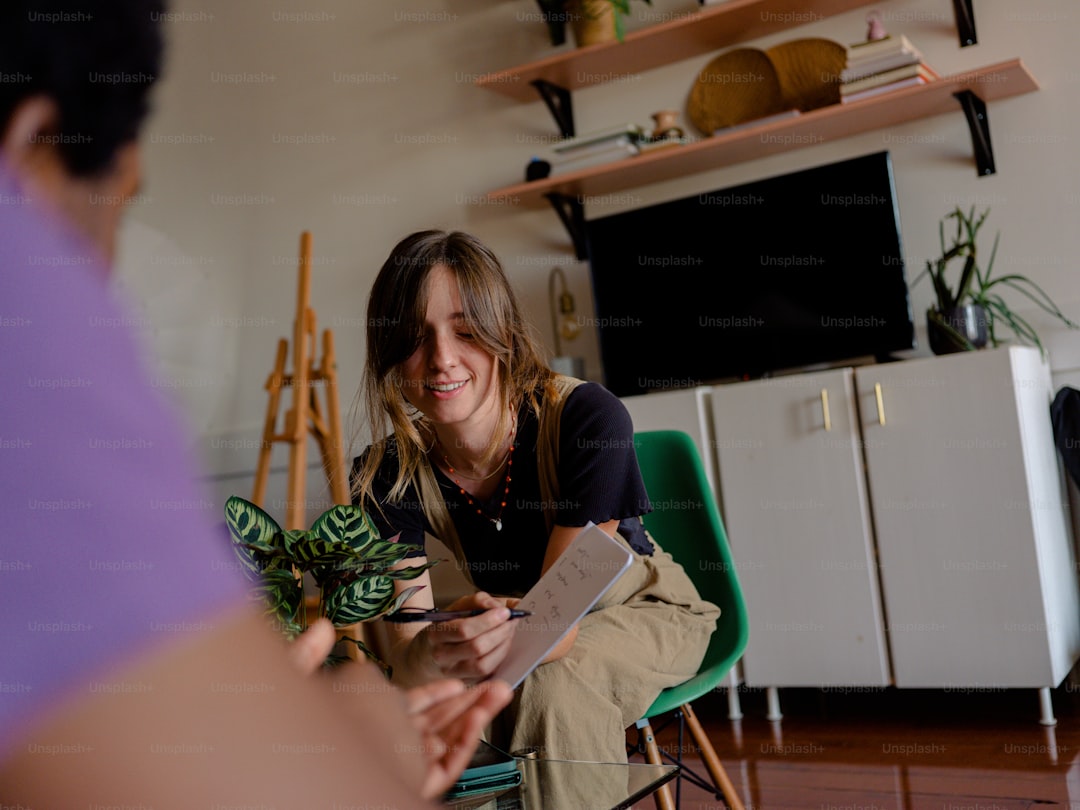Bali Budget Blueprint for Digital Nomads

Introduction
Bali has become a magnet for remote workers looking for a blend of tropical scenery, vibrant culture and affordable living. The island’s reputation as a digital‑nomad hotspot is backed by a growing network of coworking hubs, reliable internet and a community of like‑minded travelers. Yet the reality of budgeting in Bali can still feel fuzzy for newcomers. This guide breaks down every major expense category, offers practical tips for stretching each dollar, and presents sample monthly budgets that show how different lifestyle choices translate into real numbers. By the end of this article you will have a clear roadmap for living comfortably, working efficiently and enjoying the island without breaking the bank.
Why Bali Works for Digital Nomads
- Cost of living – Daily expenses such as meals, transport and basic services are substantially lower than in most Western cities.
- Infrastructure – High‑speed broadband is widely available in tourist centres, and most coworking spaces provide 24/7 access, meeting rooms and community events.
- Community – From yoga retreats to tech meet‑ups, there is a strong social fabric that helps newcomers settle quickly.
- Lifestyle variety – Whether you crave surf, rice‑field trekking, cultural festivals or quiet beachfront villas, Bali offers a range of environments within a short drive of each other.
These factors combine to make Bali an attractive, sustainable base for remote work. The key to success lies in understanding the local price landscape and aligning it with your personal priorities.
Visa Options and Legal Stay
Before you start budgeting, secure a visa that matches the length of your intended stay. The most common choices for digital nomads are:
- Tourist Visa (30‑day entry, extendable once) – Free on arrival for many nationalities, with the possibility of a 30‑day extension for a modest fee. Suitable for short trials.
- Social‑Cultural Visa (60‑day stay, extendable up to 180 days) – Requires a sponsor letter from an Indonesian citizen or organization. Extensions are processed in‑country and cost around USD 100 each.
- KITAS (Temporary Stay Permit, 6‑month to 2‑year) – Designed for work, study or retirement. The digital‑nomad KITAS is still emerging, but many freelancers use the Business Visa route through a local agency. Initial fees range from USD 500 to USD 1,200, plus monthly sponsorship costs.
Visa costs should be factored into your first month’s budget, especially if you plan to stay beyond the initial 30‑day window.
Accommodation: Finding Your Home Base
Accommodation is the single biggest variable in a Bali budget. Prices differ dramatically between popular hubs (Canggu, Seminyak, Ubud) and quieter villages (Amed, Sidemen). Below is a breakdown of the main options.
Guesthouses and Homestays
- Budget range: USD 200‑350 per month for a private room with shared bathroom.
- What you get: Basic furnishings, often a fan, Wi‑Fi in common areas, and breakfast a few times a week.
- Best for: First‑time arrivals, solo travelers, those who enjoy community vibes.
Apartments and Studios
- Budget range: USD 350‑650 per month for a fully furnished studio with a private bathroom and kitchen.
- What you get: Air‑conditioning, dedicated Wi‑Fi, and sometimes access to a small pool or gym.
- Best for: Couples or freelancers who need a quiet work environment and the ability to cook.
Villas
- Budget range: USD 800‑2,000 per month for a one‑bedroom villa with private pool.
- What you get: Spacious living area, garden, often a staff member for cleaning, and high‑speed internet.
- Best for: Small families, long‑term stays, or anyone who wants a luxurious feel without the hotel price tag.
Rental Platforms
- Local sites – KostKost, Mamikos and Facebook groups (e.g., “Bali Housing”) list weekly and monthly rentals.
- International sites – Airbnb, Booking.com and Vrbo can be useful for short‑term testing before committing to a longer lease.
Tips for Saving on Accommodation
- Negotiate – Landlords often lower the price for a 3‑ or 6‑month contract.
- Off‑season – Rates drop by 20‑30% between April and October, when tourist traffic slows.
- Shared villas – Splitting a villa with 2‑3 other nomads reduces the per‑person cost dramatically.
- Utilities – Confirm whether electricity, water and internet are included; otherwise budget an extra USD 50‑100 per month.
Food and Groceries
Eating in Bali can be as cheap or as lavish as you make it. Below are typical costs for different dining styles.
Local Warung Meals
- Price: IDR 20,000‑40,000 (USD 1.30‑2.70) per plate.
- Typical dishes: Nasi Goreng, Mie Goreng, Satay, Gado‑Gado.
- Where: Small roadside stalls, neighbourhood eateries, markets.
Mid‑Range Restaurants
- Price: IDR 80,000‑150,000 (USD 5‑10) for a main course and drink.
- Cuisine: Western brunches, Asian fusion, beachfront cafés.
Western Chains and Tourist‑Heavy Spots
- Price: USD 10‑20 per meal, comparable to city prices in the US or Europe.
Groceries
- Local markets – Fresh produce, fish and spices can be bought for pennies. A kilo of bananas costs IDR 15,000 (USD 1).
- Supermarkets – Brands like Bintang and Foodmart stock imported items at higher prices; a loaf of whole‑grain bread may be IDR 50,000 (USD 3.30).
Monthly Food Budget Estimates
| Lifestyle | Average Monthly Cost (USD) |
|---|---|
| Eating mostly at warungs, cooking at home | 200‑300 |
| Mix of warungs, occasional restaurant meals | 300‑500 |
| Frequent Western dining, coffee shops | 500‑800 |
Strategies to Keep Food Costs Low
- Shop early – Markets open at sunrise and offer the best produce prices before the midday crowd.
- Cook simple meals – A pot of rice, beans and vegetables can stretch for days.
- Use a water filter – Bottled water adds up; a filter pitcher reduces daily expenses.
- Take advantage of “free meals” – Some coworking spaces host weekly communal lunches or partner with local cafés for discounted meals.
Transportation
Getting around Bali is relatively straightforward, but traffic in the southern hubs can be congested during peak hours. Choose the mode that fits your schedule and budget.
Motorbike Rental
- Daily rate: IDR 50,000‑80,000 (USD 3‑5).
- Monthly rate: IDR 800,000‑1,200,000 (USD 50‑80).
- Pros: Flexibility, ability to navigate narrow streets, low fuel cost.
- Cons: Safety risk, required local driving license (an International Driving Permit is recommended).
Car Rental
- Daily rate: IDR 300,000‑500,000 (USD 20‑35).
- Monthly rate: IDR 6,000,000‑10,000,000 (USD 400‑650).
- Best for: Families, group outings, longer trips to the north or east.
Ride‑Hailing Apps
- Gojek and Grab dominate the market.
- Typical ride: Short trips cost IDR 15,000‑30,000 (USD 1‑2).
- Monthly estimate: USD 30‑80 depending on frequency.
Public Transport
- Bemo (minibus) and Perama (shared taxi) are cheap, but routes are limited and often confusing for newcomers.
- Cost: Less than USD 1 per ride.
Fuel and Maintenance
- Gasoline: IDR 10,000‑12,000 per liter (USD 0.65‑0.80).
- Maintenance: Set aside USD 20‑30 per month for oil changes or occasional repairs if you own a motorbike.
Saving on Transportation
- Combine errands – Plan a route that hits multiple destinations in one outing.
- Use weekly promotions – Gojek and Grab run discounts on certain days; keep the app notifications on.
- Rent a motorbike only when needed – If you stay in a walkable area, you may rent a bike a few days a week instead of maintaining a permanent lease.
Coworking Spaces and Office Needs
A reliable internet connection is the lifeblood of remote work. Bali’s coworking scene is diverse, ranging from minimalist desks to full‑service hubs with private offices.
Popular Coworking Hubs
- Dojo Bali (Canggu) – Large community, high‑speed fiber, regular events.
- Hubud (Ubud) – Eco‑friendly space with garden views, strong focus on sustainability.
- Outpost (Canggu & Ubud) – Offers both hot‑desking and dedicated desks, plus a network of retreat locations.
- Biliq (Seminyak) – Boutique environment, ideal for freelancers who prefer a quieter vibe.
Pricing Overview
| Access Type | Typical Monthly Cost (USD) |
|---|---|
| Hot‑desk (any seat) | 80‑120 |
| Dedicated desk (fixed seat) | 120‑180 |
| Private office (1‑2 people) | 300‑600 |
| Day pass | 10‑15 |
What’s Usually Included
- High‑speed Wi‑Fi (often 100 Mbps fiber).
- Printing & scanning – limited free pages, then a small fee.
- Coffee & tea – complimentary or pay‑as‑you‑go.
- Community events – workshops, networking nights, yoga sessions.
Additional Office Supplies
- Power strips and adapters – Bring your own; a basic strip costs USD 5‑10.
- External monitor – Some spaces have monitor rentals for USD 20‑30 per month.
Cost‑Cutting Tips
- Trial period – Most hubs offer a 3‑day trial for free or a cheap day pass; use this to test internet speed and ambience.
- Share a private office – Split the cost with another freelancer.
- Utilise café Wi‑Fi – In quieter towns, cafés provide stable connections at a lower price point; just buy a coffee to support the business.
Utilities, Internet at Home, and Mobile Data
Even if you work from a coworking space, having reliable internet at your residence is essential for flexibility.
Home Internet Options
- Fiber broadband – Providers like Biznet and IndiHome offer 50‑100 Mbps plans for IDR 300,000‑500,000 (USD 20‑35) per month.
- 4G LTE home router – A portable router with a data plan can be a backup; costs around IDR 250,000 (USD 17) for a 30‑day unlimited plan.
Electricity
- Average usage – A motorbike, fridge, air‑conditioner and laptop typically run at IDR 600,000‑1,000,000 (USD 40‑65) per month.
- Tips – Turn off AC when not in the room, use fans, and unplug chargers to keep the bill low.
Mobile Data
- Prepaid SIM cards – Telkomsel, XL Axiata and Smartfren dominate the market.
- Data bundles – 10 GB for IDR 150,000 (USD 10) lasting 30 days, or 30 GB for IDR 300,000 (USD 20).
- Best for – Backup internet, hotspot for coworking, and staying connected while on the move.
Health, Insurance and Safety
Staying healthy is a priority for any long‑term stay. Bali offers a range of medical facilities, but it’s wise to be prepared.
Medical Clinics
- Bali International Medical Centre (BIMC) – Kuta – English‑speaking doctors, modern equipment, but higher fees.
- Sanglah Hospital – Denpasar – Public hospital, lower cost, but longer wait times.
- Local clinics – Many villages have small health posts for basic care and vaccinations.
Typical Costs
- General consultation – IDR 150,000‑300,000 (USD 10‑20).
- Prescription medication – Varies; a common painkiller costs IDR 30,000 (USD 2).
Health Insurance
- International plans – Companies like World Nomads and SafetyWing provide coverage for medical evacuation and treatment, starting at USD 40‑70 per month.
- Local insurance – Available for expats but often limited to basic hospital care; not recommended as a sole policy for digital nomads.
Safety Tips
- Drink bottled or filtered water – Tap water is not safe for consumption.
- Mosquito protection – Use repellent and consider a nightly net if staying in rural areas.
- Road safety – Wear a helmet on motorbikes, avoid rush‑hour traffic, and be aware of sudden rain showers that make roads slippery.
Entertainment, Leisure and Lifestyle
Balancing work with recreation keeps burnout at bay. Bali offers a spectrum of activities that can fit any budget.
Free or Low‑Cost Activities
- Beach days – Kuta, Seminyak and Jimbaran have free public beaches; bring your own snacks to avoid pricey cafés.
- Temples – Visiting sites like Uluwatu and Tanah Lot costs a small entrance fee (IDR 30,000‑50,000).
- Hiking – Trails to Mount Batur, Campuhan Ridge Walk, and Sekumpul Waterfall are free, though you may pay a guide if you’re unfamiliar with the area.
Paid Experiences
- Surf lessons – Around USD 30‑45 for a group lesson.
- Yoga classes – Drop‑in rates vary from USD 8‑15; many studios offer unlimited monthly passes for USD 80‑120.
- Cultural workshops – Batik painting, Balinese cooking, and traditional dance cost USD 25‑50 per session.
Nightlife
- Bars and clubs – A beer in a beachfront bar costs IDR 50,000‑80,000 (USD 3‑5).
- Live music venues – Entrance is usually free; just purchase a drink.
Budgeting for Leisure
- Monthly entertainment allowance – USD 100‑200 is enough for a mix of free activities, a few paid experiences and occasional nightlife outings.
Monthly Budget Breakdown – Three Lifestyle Scenarios
Below are three representative monthly budgets that illustrate how different choices affect overall cost. All figures are in USD and assume a 30‑day month.
Minimalist Nomad
- Accommodation: Private room in a guesthouse – 250
- Food: Primarily warung meals + home‑cooked staples – 250
- Transport: Motorbike rental + occasional Gojek – 70
- Coworking: Hot‑desk – 100
- Internet & utilities: Shared fiber plan – 30
- Health & insurance: Basic international coverage – 50
- Leisure: Free activities, occasional coffee – 60
- Miscellaneous: Visa extension, toiletries – 40
Total: ~USD 910
Comfortable Creator
- Accommodation: Furnished studio apartment – 500
- Food: Mix of warungs, mid‑range restaurants, grocery cooking – 400
- Transport: Motorbike + ride‑hailing – 120
- Coworking: Dedicated desk – 150
- Internet & utilities: Private fiber + electricity – 70
- Health & insurance: Full international plan – 70
- Leisure: Yoga passes, surf lessons, occasional nightlife – 150
- Miscellaneous: Visa, occasional shopping – 80
Total: ~USD 1,540
Luxury Lifestyle
- Accommodation: One‑bedroom villa with pool – 1,500
- Food: Frequent Western restaurants, organic groceries – 800
- Transport: Car rental + occasional private driver – 600
- Coworking: Private office – 500
- Internet & utilities: Premium fiber, high electricity – 150
- Health & insurance: Premium international plan with dental – 150
- Leisure: Private yoga instructor, guided tours, spa treatments – 400
- Miscellaneous: Visa, personal shopping, souvenirs – 200
Total: ~USD 4,300
These scenarios illustrate the flexibility of Bali’s cost structure. Adjusting any line item (e.g., swapping a villa for a studio) can shift the budget dramatically.
Practical Tips for Stretching Your Money
- Batch cooking – Prepare meals for several days at once; reduces grocery trips and food waste.
- Use cash for daily expenses – It creates a tangible sense of spending limits and avoids hidden fees on cards.
- Monitor exchange rates – Transfer money when the Rupiah is weaker against your home currency; services like Wise and Revolut offer low‑fee conversions.
- Leverage community swaps – Many coworking spaces host “skill‑swap” evenings where you can trade a service (e.g., graphic design) for a free meal or a language lesson.
- Stay in one area longer – Moving frequently incurs extra transport and accommodation fees.
- Take advantage of free Wi‑Fi – Libraries, cafés, and some temples provide reliable internet; just purchase a modest purchase to support the venue.
Sample One‑Month Itinerary for a Balanced Experience
Week 1 – Settle In
- Arrive, obtain visa extension, and secure a guesthouse in Canggu.
- Purchase a SIM card, set up a Gojek account, and rent a motorbike.
- Attend an orientation event at Dojo Bali to meet other nomads.
Week 2 – Work and Explore
- Use a hot‑desk at Dojo Bali (8 am‑6 pm).
- After work, explore nearby beaches (Echo Beach, Batu Bolong) and try local warungs for dinner.
- Saturday: Join a group surf lesson (USD 35).
Week 3 – Deep Dive into Culture
- Move to a short‑term studio in Ubud for a change of scenery.
- Enroll in a weekly yoga class (USD 12 per class) and a Balinese cooking workshop (USD 30).
- Weekend trip to Mount Batur sunrise trek – guide fee USD 25.
Week 4 – Review and Plan
- Evaluate internet speed in the new studio; if unsatisfactory, consider returning to coworking.
- Calculate actual expenses versus budget; adjust next month’s accommodation type if needed.
- Book a 2‑night stay in a beachfront villa for a celebratory end‑of‑month getaway (USD 150 for the night).
This itinerary demonstrates how you can blend work, culture, fitness and leisure while staying within a moderate budget.
Final Thoughts
Bali’s allure for digital nomads stems from its unique mix of affordable living, strong remote‑work infrastructure and a lifestyle that encourages both productivity and adventure. By dissecting each cost category, understanding the local price dynamics, and applying practical savings strategies, you can design a budget that matches your personal comfort level. Whether you aim to live on less than a thousand dollars a month or prefer a more indulgent experience, the island’s flexibility makes it possible.
Take the time to test different neighborhoods, negotiate longer leases, and engage with the thriving expat community. The insights you gain will not only protect your wallet but also enrich your overall Bali experience, turning a temporary work‑ation into a truly sustainable digital‑nomad chapter.
Random Posts

Smart Finance Tax and Legal Strategies for Nomads Plus Health and Travel Insurance Plans
Discover how digital nomads can protect earnings and stay compliant with smart tax residency, corporate structures, and the right health and travel insurance, so you can roam worry-free.
1 month ago

African Havens for Digital Nomads
Discover Africa’s emerging digital-nomad hubs, vibrant cities with fast internet, affordable living, coworking spaces and rich culture, from Indian Ocean beaches to West African creative quarters
4 days ago

Exploring the Best Coworking Communities for Digital Nomads
Discover the top coworking communities worldwide that give digital nomads a productive hub, supportive network, and local culture, plus tips for picking the perfect space for your next adventure.
1 month ago

Wellbeing Hacks for the Modern Nomad Balancing Work Travel and Mind
Discover portable, low-maintenance wellbeing hacks that keep your mind clear, body strong and spirit uplifted while you work from any corner of the globe.
2 months ago

Legal Must Haves for the Modern Nomadic Lifestyle
Discover the essential legal checklist for modern nomads: the right visas, tax strategies, business compliance, insurance coverage, and personal protection so you can travel freely without legal worries.
2 months ago
Latest Posts

Essential Software Every Remote Professional Should Use
Master remote work with essential tools: instant messaging like Slack, high definition video calls such as Zoom, and asynchronous voice apps. Streamline communication, stay connected and boost productivity.
1 day ago

Mastering Remote Work Productivity for Digital Nomads and Freelancers
Learn proven habits, tools, and tactics that help digital nomads and freelancers stay focused, deliver quality work, and maintain a sustainable lifestyle while traveling the world.
1 day ago

Tech‑Friendly European Towns Perfect for Remote Living
Discover Europe’s best small towns where fast internet, affordable living and vibrant tech communities let you work remotely while soaking up historic charm, lakeside views or mountain air.
1 day ago